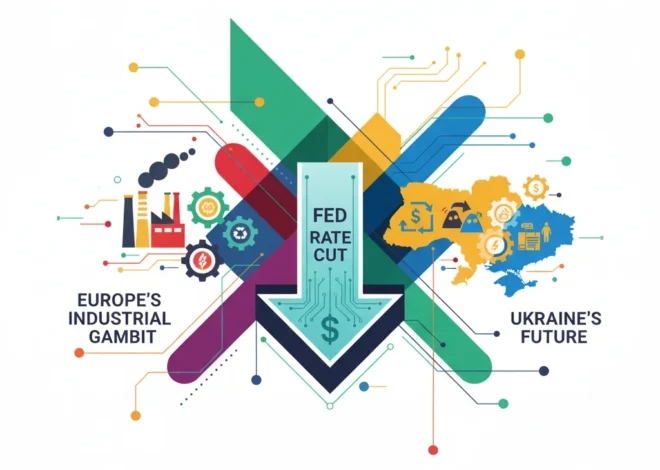
Beyond the Headlines: Decoding the Landmark US-China Deal on TikTok, Rare Earths, and Global Trade
A Geopolitical Thaw? Unpacking the Tentative US-China Economic Accord
In a move that sent ripples through the global economy and financial markets, the United States and China have signaled a significant de-escalation in their protracted economic standoff. The US trade secretary announced that a deal concerning the future of the social media giant TikTok is set to be signed, while also hinting at a broader agreement covering the strategically vital sectors of rare earth elements and tariffs. This development, emerging ahead of crucial bilateral talks, marks a potential turning point in a relationship that has been defined by friction and uncertainty for years. For investors, business leaders, and anyone monitoring the health of the global stock market, understanding the nuances of this multifaceted agreement is not just important—it’s imperative.
This isn’t merely a political handshake; it’s a complex recalibration of economic interdependencies that touches everything from social media and financial technology to green energy and national security. The agreement seeks to resolve three of the most contentious issues that have dominated US-China relations: the data security concerns surrounding TikTok, America’s reliance on China for critical rare earth minerals, and the punishing tariffs that have hampered global trade. As we peel back the layers of this landmark accord, we uncover a pragmatic strategy to manage competition, secure supply chains, and create a more stable, predictable environment for international investing and commerce.
The TikTok Dilemma: From National Security Threat to Regulated Partner
For years, TikTok has been at the epicenter of a geopolitical storm. With over 150 million users in the United States, the app’s ownership by the Chinese company ByteDance raised significant national security alarms in Washington. The core concern was twofold: the potential for the Chinese government to access sensitive American user data and the power to influence public discourse by manipulating the platform’s powerful content algorithm. These fears prompted calls for an outright ban and a sprawling review by the Committee on Foreign Investment in the United States (CFIUS).
The impending deal appears to be a move away from the brink. While full details remain under wraps, it is widely believed to formalize and expand upon the framework known as “Project Texas.” This initiative, a $1.5 billion restructuring effort, aims to house US user data on domestic servers managed by the American tech giant Oracle. The plan involves creating a standalone US entity, TikTok U.S. Data Security Inc., to oversee data protection and content moderation, with an independent board reporting to CFIUS.
This solution represents a novel approach to digital governance, a potential blueprint for how Western nations might engage with foreign-owned technology platforms. It sidesteps a forced sale, which proved legally and logistically complex, in favor of a tightly controlled operational model. For the world of fintech and data-driven businesses, this sets a precedent for “data sovereignty”—the principle that a nation’s data is subject to its own laws and governance structures. It signals a future where cross-border data flows, the lifeblood of the modern digital economy, will be subject to intense regulatory scrutiny and innovative security solutions.
Inside the Gilded Cage: Global Finance on the Brink as US-China Tensions Boil Over
Rare Earths: Securing the Building Blocks of the Future
Beyond the digital realm, the agreement hints at a resolution for a tangible, and arguably more critical, dependency: rare earth elements (REEs). These 17 metallic elements are the unsung heroes of modern technology, essential components in everything from smartphones and electric vehicles to wind turbines and advanced military hardware like F-35 fighter jets. An agreement on REEs addresses a major vulnerability in the American supply chain, as China currently dominates every stage of the process.
To understand the scale of this dominance, consider the data. China is not only the world’s leading miner of these elements but, more importantly, it controls the highly complex and environmentally challenging processing phase. According to the U.S. Geological Survey, China accounted for approximately 70% of global rare earth mining in 2022 and an even higher percentage of processing and magnet production.
This concentration of power has given Beijing significant geopolitical leverage, which it has not been afraid to use. A potential agreement would likely focus on ensuring a stable and predictable supply of these materials for American industries, mitigating the risk that access could be restricted during future disputes. This could involve long-term supply contracts, price stabilization mechanisms, or even commitments from China not to weaponize its control over the market. For investors, this has profound implications for the green energy, defense, and technology sectors. A stable REE supply chain reduces input cost volatility and project risk, potentially boosting the stock market valuations of companies in these critical industries and encouraging long-term capital investment in domestic manufacturing.
The following table illustrates the global imbalance in the rare earths supply chain, highlighting the strategic importance of this part of the deal.
| Stage of Supply Chain | China’s Estimated Global Share | Strategic Implication |
|---|---|---|
| Mining & Extraction | ~70% | Control over raw material output. |
| Separation & Refining | ~85-90% | The most significant bottleneck; processing is technically complex and capital-intensive. |
| Metal & Alloy Production | ~90% | Dominance in converting refined materials into usable forms for manufacturing. |
| High-Performance Magnet Production | >90% | Near-monopoly on a critical component for EVs, wind turbines, and defense systems. |
Indonesia at a Crossroads: Analyzing Economic Realities in Prabowo's First Year
Rolling Back Tariffs: A Relief for the Global Economy
The final pillar of this emerging accord is a potential agreement on tariffs. The trade war, initiated in 2018, saw the U.S. and China impose hundreds of billions of dollars in tariffs on each other’s goods. While intended to address trade imbalances and intellectual property theft, the tariffs have had a far-reaching and often disruptive impact. They increased costs for businesses and consumers, complicated global supply chains, and introduced a significant element of uncertainty into international trading and economics.
An agreement to roll back some of these tariffs would be a welcome relief for the global economy. For American companies, it could mean lower input costs for manufactured goods, while for the agricultural sector, it could reopen the vast Chinese market. For consumers, it could translate to lower prices on a wide range of imported products. According to analysis from the Peterson Institute for International Economics, the trade war has been a net loss for the U.S. economy, and a reversal of these policies could provide a much-needed stimulus.
From a financial perspective, a tariff détente could reduce inflationary pressures and provide central banks, including the Federal Reserve, with more flexibility in their monetary policy decisions. It would inject a dose of confidence into a global banking system that has been bracing for a potential slowdown, fostering a more favorable environment for international trade finance and cross-border investment. The mere hint of a deal, as reported by the BBC, suggests that both sides recognize the economic self-harm of the current trajectory and are seeking a more constructive path forward.
Gove's High-Stakes Gamble: Can a 1.5 Million Home Target Reshape the UK Economy?
Conclusion: A New Chapter of Pragmatic Engagement
The tentative agreement between the U.S. and China on TikTok, rare earths, and tariffs is more than a collection of individual deals; it represents a potential shift in geopolitical strategy. It signals a move away from broad-based confrontation toward a more nuanced approach of “managed competition.” By addressing specific points of friction, both superpowers are attempting to build guardrails around their rivalry, allowing for cooperation and stability in key economic areas while continuing to compete in others.
For the financial world, this development is a cautiously optimistic sign. It reduces tail risk, lowers volatility, and creates a more predictable landscape for investing and strategic planning. The path forward will not be without its challenges, and deep-seated strategic disagreements will persist. However, this accord demonstrates a shared interest in maintaining global economic stability. As the details are finalized and signed, business leaders and investors must analyze the fine print, adapt their strategies, and prepare to navigate a new, more complex, and perhaps more pragmatic chapter in US-China relations.


